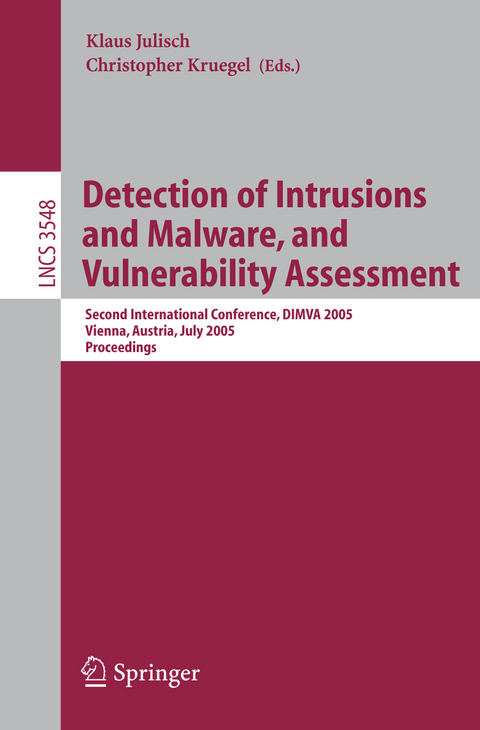
Detection of Intrusions and Malware, and Vulnerability Assessment
Springer Berlin (Verlag)
978-3-540-26613-6 (ISBN)
Obfuscated Code Detection.- Analyzing Memory Accesses in Obfuscated x86 Executables.- Hybrid Engine for Polymorphic Shellcode Detection.- Honeypots.- Experiences Using Minos as a Tool for Capturing and Analyzing Novel Worms for Unknown Vulnerabilities.- A Pointillist Approach for Comparing Honeypots.- Vulnerability Assessment and Exploit Analysis.- Automatic Detection of Attacks on Cryptographic Protocols: A Case Study.- METAL - A Tool for Extracting Attack Manifestations.- Flow-Level Traffic Analysis of the Blaster and Sobig Worm Outbreaks in an Internet Backbone.- Anomaly Detection.- A Learning-Based Approach to the Detection of SQL Attacks.- Masquerade Detection via Customized Grammars.- A Prevention Model for Algorithmic Complexity Attacks.- Misuse Detection.- Detecting Malicious Code by Model Checking.- Improving the Efficiency of Misuse Detection.- Distributed Intrusion Detection and IDS Testing.- Enhancing the Accuracy of Network-Based Intrusion Detection with Host-Based Context.- TCPtransform: Property-Oriented TCP Traffic Transformation.
| Erscheint lt. Verlag | 24.6.2005 |
|---|---|
| Reihe/Serie | Lecture Notes in Computer Science | Security and Cryptology |
| Zusatzinfo | X, 241 p. |
| Verlagsort | Berlin |
| Sprache | englisch |
| Maße | 155 x 235 mm |
| Gewicht | 363 g |
| Themenwelt | Informatik ► Theorie / Studium ► Kryptologie |
| Schlagworte | Access Control • anomality detection • Audit Control • authentication • Code • Cryptographic Attacks • Internet • Intrusion Detection • log-data analysis • network intrusion • Network Security • Pattern Analysis • privacy • Secure Communications • security • SQL |
| ISBN-10 | 3-540-26613-5 / 3540266135 |
| ISBN-13 | 978-3-540-26613-6 / 9783540266136 |
| Zustand | Neuware |
| Haben Sie eine Frage zum Produkt? |
aus dem Bereich


